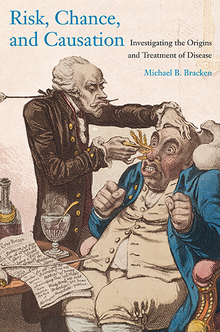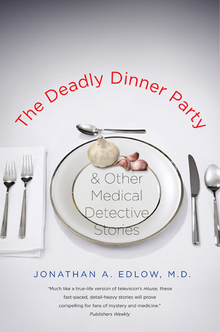Risk, Chance, and Causation
WARNING
You are viewing an older version of the Yalebooks website. Please visit out new website with more updated information and a better user experience: https://www.yalebooks.com
Investigating the Origins and Treatment of Disease
Michael B. Bracken
Out of Print
A noted clinical epidemiologist shows how evidence-based medicine can help us understand and assess news about health risks, cures, and treatment “breakthroughs”
The press and other media constantly report news stories about dangerous chemicals in the environment, miracle cures, the safety of therapeutic treatments, and potential cancer-causing agents. But what exactly is actually meant by “increased risk”—should we worry if we are told that we are at twice the risk of developing an illness? And how do we interpret “reduced risk” to properly assess the benefits of noisily touted dietary supplements?
The press and other media constantly report news stories about dangerous chemicals in the environment, miracle cures, the safety of therapeutic treatments, and potential cancer-causing agents. But what exactly is actually meant by “increased risk”—should we worry if we are told that we are at twice the risk of developing an illness? And how do we interpret “reduced risk” to properly assess the benefits of noisily touted dietary supplements?
Demonstrating the difficulty of separating the hype from the hypothesis, noted epidemiologist Michael Bracken clearly communicates how clinical epidemiology works. Using everyday terms, Bracken describes how professional scientists approach questions of disease causation and therapeutic efficacy to provide readers with the tools to help them understand whether warnings of environmental risk are truly warranted, or if claims of therapeutic benefit are justified.
Michael B. Bracken is the Susan Dwight Bliss Professor of Epidemiology at Yale University.
“Risk, Chance, and Causation is remarkable for a text covering such technical and scientific subject matter…Bracken provides his audience with an engaging, entertaining and educational read.”—Audrey F. Saftlas, University of Iowa
“The book is very enjoyable to read, and the author has successfully diversified the cold scientific topics with anecdotal material and popular quotes.”—John P. A. Ioannidis, Stanford University
"This book is a great read for almost anyone, from the interested lay reader to the experienced epidemiologist. We are quickly drawn into to the foundation of epidemiologic science and thinking by way of stories, cautionary tales and numerous examples, from both history and current events. Whether you are a practitioner, teacher, student, or you just happen to pick up the book, you will be certain to find Bracken’s stories compelling and even eye-opening."—Kay Dickersin, Johns Hopkins Bloomberg School of Public Health
"Using a great range of examples, Michael Bracken provides a masterful guide to identifying the many false claims about what makes humans healthy or sick. This book should be required reading for all in the media who try to explain health studies to the public."—Nigel Paneth, University Distinguished Professor, Michigan State University
"This book is a credit to epidemiology and an exciting and joyful read for lay and learned readers alike.”—Geir W. Jacobsen, Norwegian University of Science and Technology
“This extensively documented book deserves a wide readership.”—Choice
“If you would like a book to offer to a thoughtful and open-minded person unfamiliar with how epidemiologists and statisticians develop, process, and think about human health and information, this is a very good choice. Public understanding of science would be much advanced if this book were to be required reading in courses in science and journalism.”—Nigel Paneth, The Lancet
Selected as a Choice Outstanding Academic Title for 2013 in the Health Sciences Category.
Received an Honorable Mention for the 2013 American Publishers Awards for Professional and Scholarly Excellence (PROSE), in the Economics category.
ISBN: 9780300188844
Publication Date: June 18, 2013
Publication Date: June 18, 2013
344 pages, 6 1/8 x 9 1/4
31 b/w illus.
31 b/w illus.








